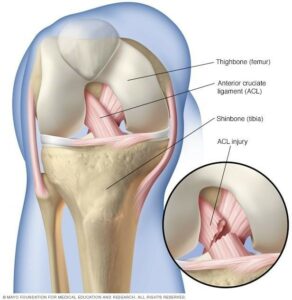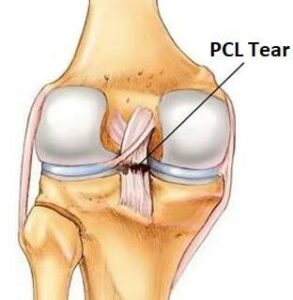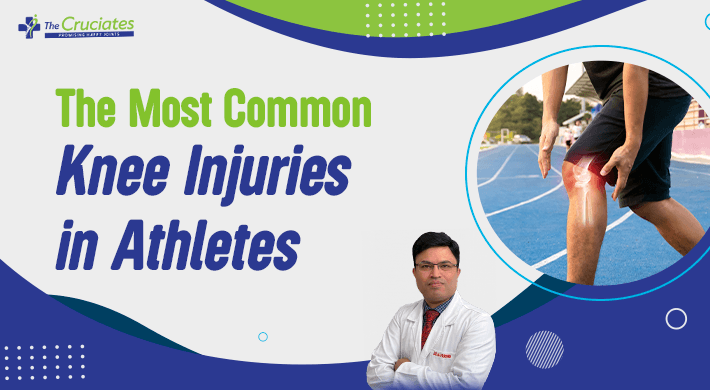When it comes to athletes, the risk of sustaining a knee injury is unfortunately quite high. Whether you are a professional or recreational athlete, it is important to be aware of the most common knee injuries and how to prevent them. In this blog post, we will discuss the anatomy of the knee, and the most common knee injuries seen in athletes, including anterior cruciate ligament (ACL) injuries, posterior cruciate ligament (PCL) injuries, medial and lateral collateral ligament injuries, meniscal tears, patellar fractures, and patellar tendon injuries.
The knee joint is a complex joint comprised of bones, ligaments, tendons, and muscles, all working together to provide stability and mobility. It is the largest joint in the body and is critical to our ability to move. The knee joint consists of the thigh bone (femur) which connects to the shin bone (tibia) via two main ligaments, the anterior cruciate ligament (ACL) and the posterior cruciate ligament (PCL). Additionally, there are two collateral ligaments on each side of the knee, which provide stability from the side when running and jumping. The menisci act as a cushion and also protect the joint from excessive stress. Finally, the patella is connected to the femur by the patellar tendon, allowing for effective knee extension.
The primary function of the knee is to allow us to bend and straighten our legs. However, it is also responsible for absorbing shock during activities like running and jumping, providing stability during weight-bearing activities, and allowing for a wide range of motions. Unfortunately, these activities can put a lot of strain on the knee, leading to common knee injuries such as ACL tears, PCL tears, collateral ligament sprains, meniscal tears, patellar fractures, and patellar tendon injuries.
It is important to understand the anatomy and function of the knee in order to prevent these common knee injuries. Taking proper precautions such as wearing appropriate shoes, performing warm-up exercises, and avoiding high-impact activities can help minimize your risk of injury. Knowing how to recognize signs of knee trouble and when to seek medical attention can also help keep your knee healthy and strong.
Anterior Cruciate Ligament (ACL) injuries
The Anterior Cruciate Ligament (ACL) is the most common ligament to be injured among athletes and sports persons, especially among female athletes. ACL injuries occur when an athlete makes a sudden change in direction or makes an awkward landing from a jump, resulting in a tear or sprain in the ligament. It is more likely to occur in sports that involve cutting and pivoting such as soccer, basketball, and skiing. Female athletes have a higher risk of suffering an ACL injury due to anatomical differences in their lower bodies, such as narrower hips, weaker thigh muscles, and increased knee laxity.

Preventing an ACL injury requires strong thigh and hamstring muscles which can help support the knee joint during physical activity. Athletes can practice strengthening exercises such as squats, lunges, and leg presses to reduce the risk of an ACL injury. Additionally, proper warm-up routines before physical activity are essential to prepare the muscles and joints for exercise. Proper stretching techniques before and after physical activity can also help prevent injuries.
Although ACL injuries are very common, athletes can take steps to reduce their risk of injury. Building strong leg muscles and implementing proper warm-up and stretching techniques before physical activity can help athletes protect their knees from injury.
Posterior Cruciate Ligament (PCL) injuries
The Posterior Cruciate Ligament (PCL) is the second most commonly injured ligament in the knee. PCL injuries typically occur when the knee is bent and a direct blow is applied to the front of the knee. This can occur in a variety of sports, but especially in contact sports like football or rugby.

When the PCL is torn, it usually causes significant pain, swelling, and difficulty in moving the knee. Depending on the severity of the injury, it may take several weeks or months of rehabilitation to return to full strength. Surgery may be recommended if the tear is severe enough to prevent proper functioning of the knee.
Fortunately, there are steps that athletes can take to help avoid a PCL injury. Wearing properly fitted protective gear, such as knee braces or pads, can help protect the knee from direct blows and help reduce the risk of a PCL tear. Additionally, taking time for proper warm-up and stretching exercises can help reduce the risk of an acute knee injury.
MCL and LCL Injuries
The LCL is located on the outside of the knee, connecting the femur (thighbone) to the fibula (the smaller bone in the lower leg). The MCL is located on the inside of the knee, connecting the femur to the tibia (the larger bone in the lower leg).
MCL injury usually occurs due to a direct blow to the outside of the knee and LCL due to the inside of the knee. Fortunately, there are some ways that athletes can reduce their risk of MCL and LCL injuries. Strengthening and stretching the muscles around the knee, particularly those in the quadriceps and hamstrings, is essential for maintaining stability and preventing these injuries. Additionally, wearing properly fitting footwear with good shock absorption will help absorb the impact of hard landings or falls. Finally, proper warm-up and cool-down exercises before and after exercise are key for preventing knee injuries.
Meniscal Tears
There are two types of meniscal tears: acute and degenerative. Acute tears usually occur from a traumatic event, such as a twist or an impact on the knee, while degenerative tears tend to occur over time due to aging or wear and tear. Medial meniscal tears are more common than lateral ones, as the medial meniscus is more prone to tearing due to its shape and location.

